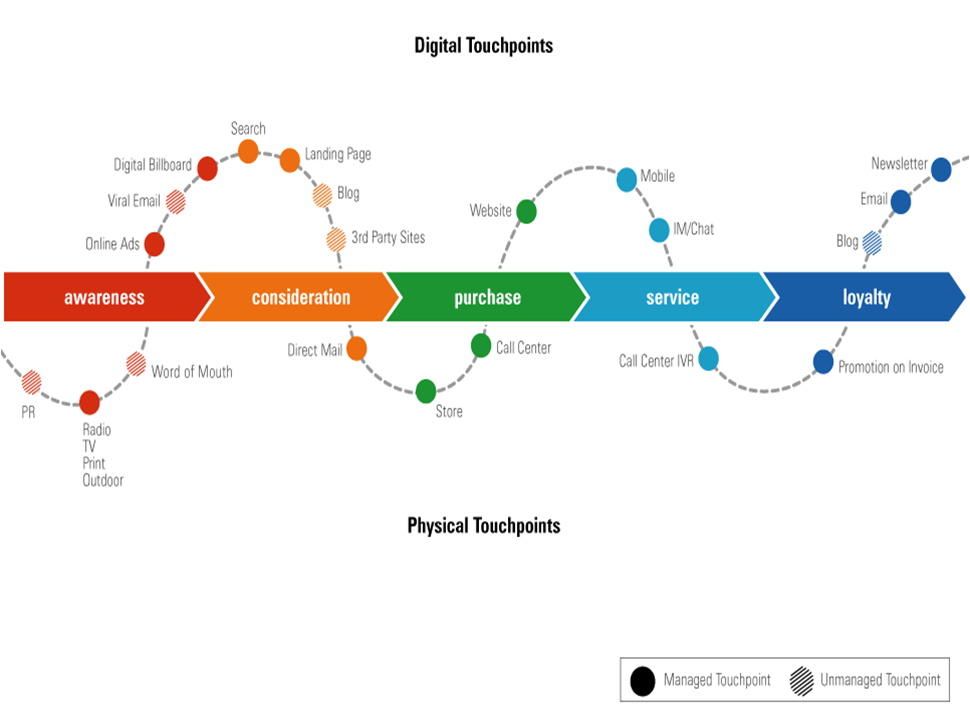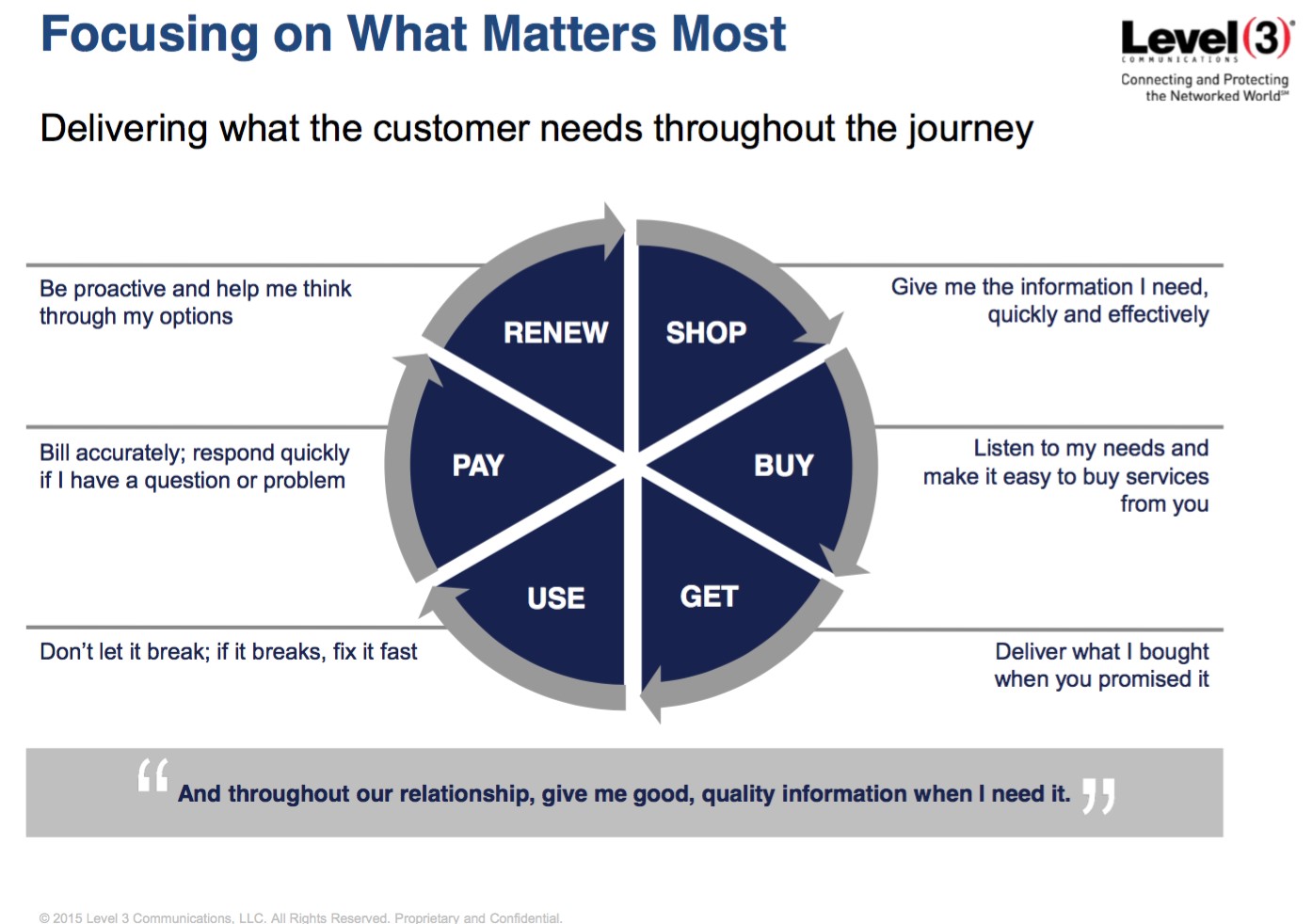B2B buying journeys are long, complex affairs. Gartner reports that the typical buying group contains between 6-10 members, which makes understanding what customers are thinking and feeling at each stage of the journey critical.
A customer experience map is a great way to map multiple experiences and see clearly how to engage and nurture potential buyers from prospect to customer. If the goal is to hone into a particular area of focus or specific customer journey, then consider starting with a buyer’s journey map (also known as a customer journey map).
Here are six ways to get started.
6 Ways to Create a Buyer Journey Map
1. The Easy-to-Convince Buyer
 This model works best for what CFI’s George Stenitzer calls the “Easy-to-Convince” Buyer. This simple cyclical model is ideal for the brand-loyal customer, the impulse buyer, and the single decision-maker. Note that for this process to be repeatable, the customer needs to be inspired both at the initial trigger and at the renewal stage. This may be overly simplistic for many B2B journeys but can help get you thinking about broad behavior.
This model works best for what CFI’s George Stenitzer calls the “Easy-to-Convince” Buyer. This simple cyclical model is ideal for the brand-loyal customer, the impulse buyer, and the single decision-maker. Note that for this process to be repeatable, the customer needs to be inspired both at the initial trigger and at the renewal stage. This may be overly simplistic for many B2B journeys but can help get you thinking about broad behavior.
2. The Linear Model
 This fun linear map that divides the customer journey into five stages: awareness, consideration, purchase, service, and loyalty. Note that this model visually separates digital and physical assets, and managed and unmanaged touchpoints.
This fun linear map that divides the customer journey into five stages: awareness, consideration, purchase, service, and loyalty. Note that this model visually separates digital and physical assets, and managed and unmanaged touchpoints.
3. The Non-Linear Model
Gartner argues that the modern B2B buyer’s journey is decidedly nonlinear. If you’re just starting out, it may be helpful to use a linear model to map out your basic, ideal approach, then elevate your thinking to this more sophisticated model to refine and adjust.
5. The Plain Ol’ Chart

This Plain Jane, but extremely comprehensive, buyer’s journey from Forrester includes key stakeholders, buyer needs, influencers, most impactful content, and top outlets for each stage of the customer journey. This detailed approach makes it easy to find gaps in your current approach.
6. Just the Basics
 This circular model from the folks at Level(3) examines the points along the buyer’s journey that matter most. It helps you to see things from the customer’s point of view, so you can ensure your approach anticipates and meets people’s needs before they even arise.
This circular model from the folks at Level(3) examines the points along the buyer’s journey that matter most. It helps you to see things from the customer’s point of view, so you can ensure your approach anticipates and meets people’s needs before they even arise.
6. The Emotional Map

This chart maps includes the buyer’s thoughts and emotions at each stage of the journey and provides a great jumping-off point for emotion-laden purchases. Even though B2B buying decisions aren’t technically personal, they’re generally high-pressure choices that can affect the job performance and future success of the purchaser. To treat B2B buyers as purely rational, emotion-free decision-makers is a mistake. It pays off to think critically about where and when they’ll feel optimism, doubt, and fear.
Other Tips for Creating a Buyer Journey
- Whatever model you choose, Forrester suggests mapping the “5 W’s”: Who, What, Where, When, and Why.
- Build separate buyer’s journey maps for each key stakeholder.
- Consider including the end user in the buyer’s journey. They may not make the buying decision, but they will be responsible for its success and ultimate renewal.


